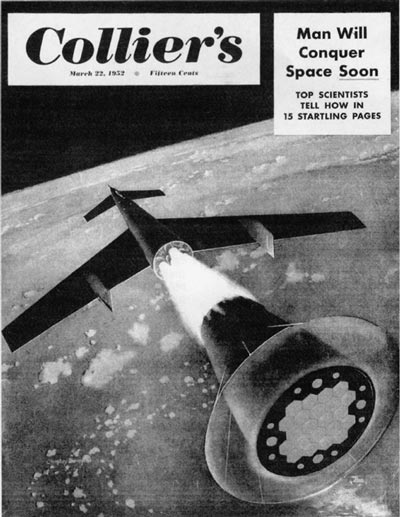
This Article From Issue
May-June 1998
Volume 86, Number 3
DOI: 10.1511/1998.25.0
Countdown: A History of Space Flight. T. A. Heppenheimer. x + 398 pp. John Wiley & Sons, 1997. $30.
It was unequivocal fun to pass through this quintessential, informative comparative history of space flight, pre-World War II to today. Tom Heppenheimer has produced an excellent work with a broad and impressive scope. He has undertaken nothing less than to present the full range of the world's basic space activities, including those of the Soviet Union and the Central Intelligence Agency. His choice of facts and his logic and analysis are competent and convincing.

From Countdown.
Vivid portraits of early rocketry visionaries and key frontrunners stand beside descriptions of Stalin and Hitler as they search for wonder weapons. He shows how political issues drove the rise of America's rocket industry and shaped the race to the moon. Military programs receive due attention, as do international cooperation, commercial space flights, orbiting space stations and the space shuttle. In places, Heppenheimer, an experienced storyteller, weaves technological breakthroughs and space folklore and legends, sometimes with a touch of gossip. It is a remarkable, exciting and important story of a period that will inspire envy in future generations that look back at our eyewitness view of humanity's leap into outer space.
Heppenheimer focuses on the forces that drove the world's major nations into this unprecedented venture. Working with historians Peter Gorin and Asif Siddiqi, he has made use of research from the recently opened Russian archives; he also relies on declassified CIA documents. In places, he has conducted original interviews and obtained primary source material from archives. Still, most of his work relies on secondary sources, with strong emphasis on existing books and published articles.
For all its strengths, the book may be a struggle for a reader without a solid background in space history. The uninitiated will drown in a sea of names, personalities, titles, abbreviations and terms, many of which lack explanation. Technical terms are used freely throughout, but there is no glossary. And there are only eight pages of photographs and a few line drawings.
Because the book attempts to treat the whole of space flight, by necessity it only brushes many topics before proceeding to others. The treatment evokes a USA Today quality, and specialists may find reason to complain of cursory treatment of their topical areas. Indeed, even considering space limitations, many topics receive inadequate treatment. For instance, the actual space race was a competition of engineering and scientific ideas; Heppenheimer's version pays little attention to this.
Yet the book is rich in facts linked by their clear conceptual integrity, and it will find its audience mainly among teachers, graduate students, post-doctorates, anyone with a strong prior interest in space flight and specialists who want an introduction to topics far removed from their expertise. It also is the first single-volume treatment of space flight since Willy Ley's 1968 book Rockets, Missiles and Men in Space. The book further breaks ground by presenting an accurate overview of the Soviet space program, thus complementing another book published last year by John Wiley: James Harford's Korolev. NASA is preparing to publish a book written by Siddiqi (mentioned earlier in this review) that covers the Soviet space program from its inception to 1974. And one hopes that in time an American publisher will print a translation of the outstanding Korolev: Facts and Myths by Yaroslav Golovanov. The latter is well known in his own country; his work deserves an audience in the United States as well.—Alexander Gurshtein, Astronomy, Space Research and History of Science, Mesa State College, Colorado
American Scientist Comments and Discussion
To discuss our articles or comment on them, please share them and tag American Scientist on social media platforms. Here are links to our profiles on Twitter, Facebook, and LinkedIn.
If we re-share your post, we will moderate comments/discussion following our comments policy.